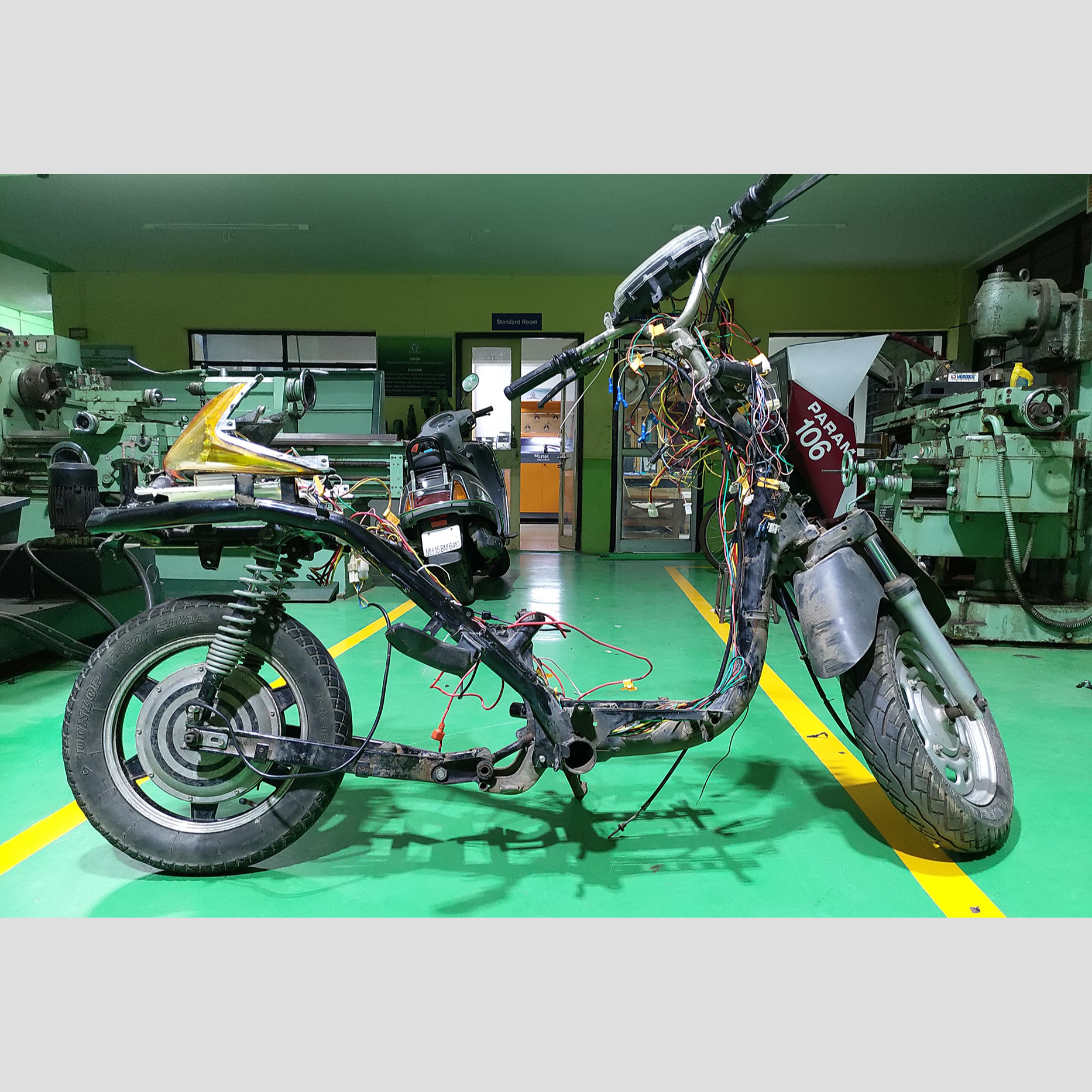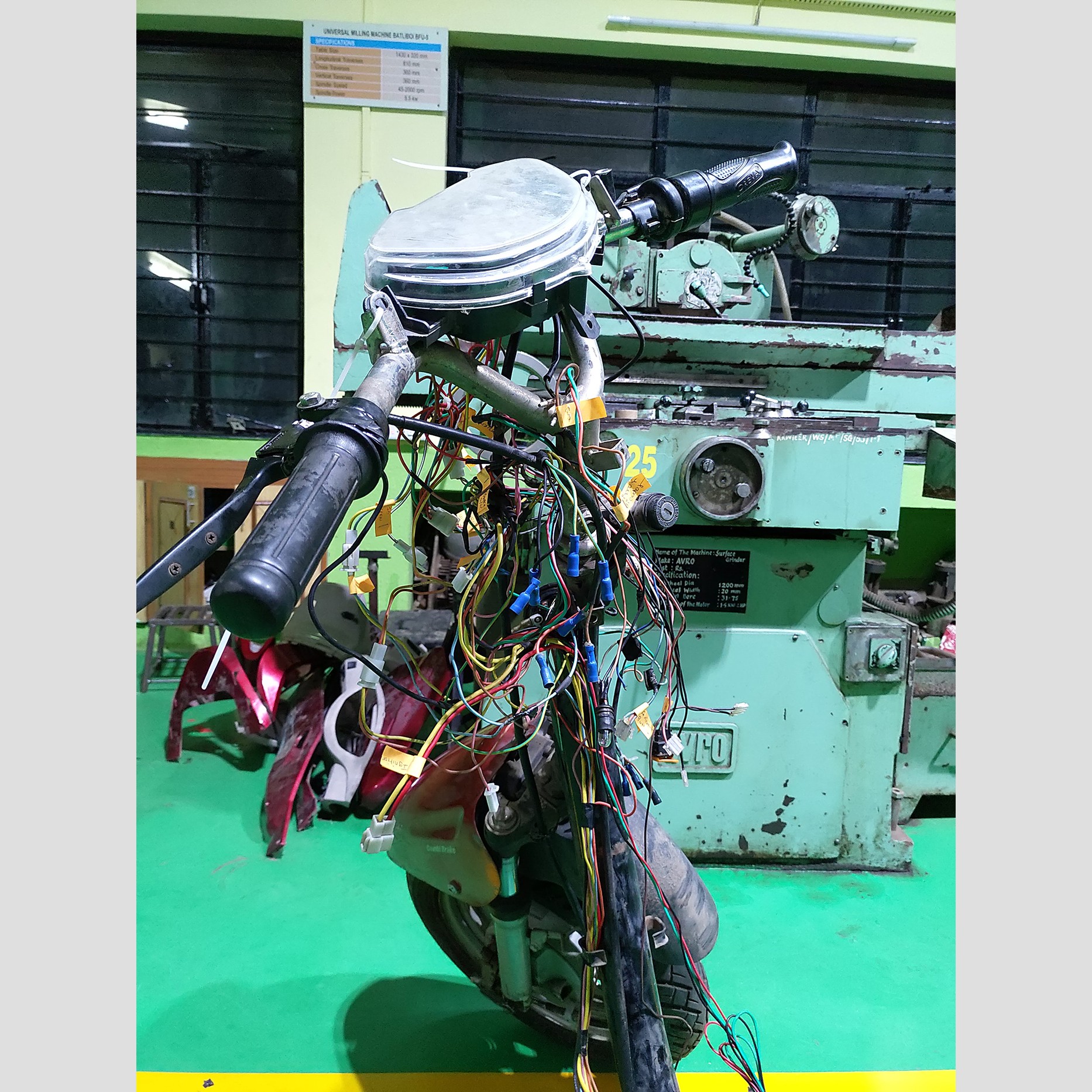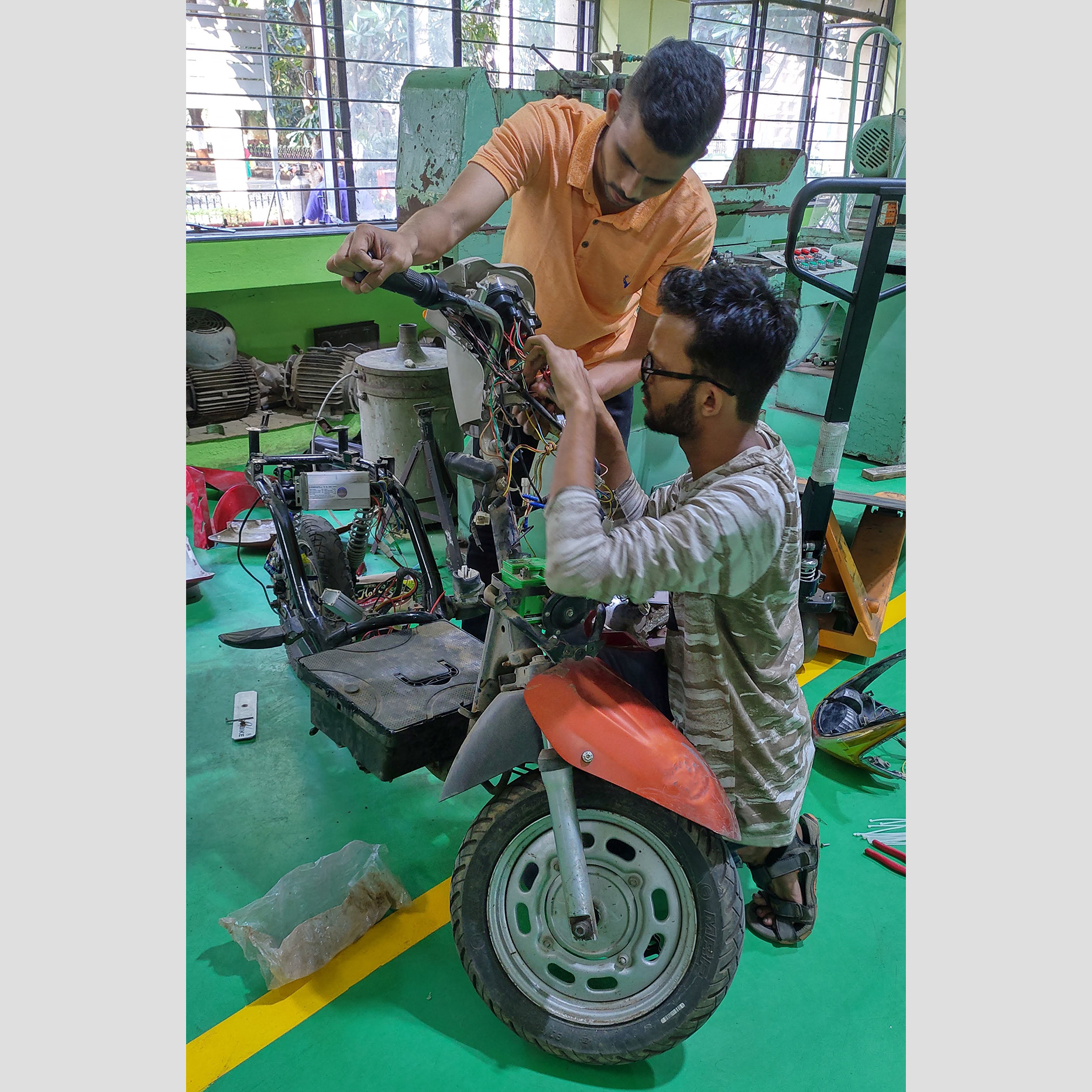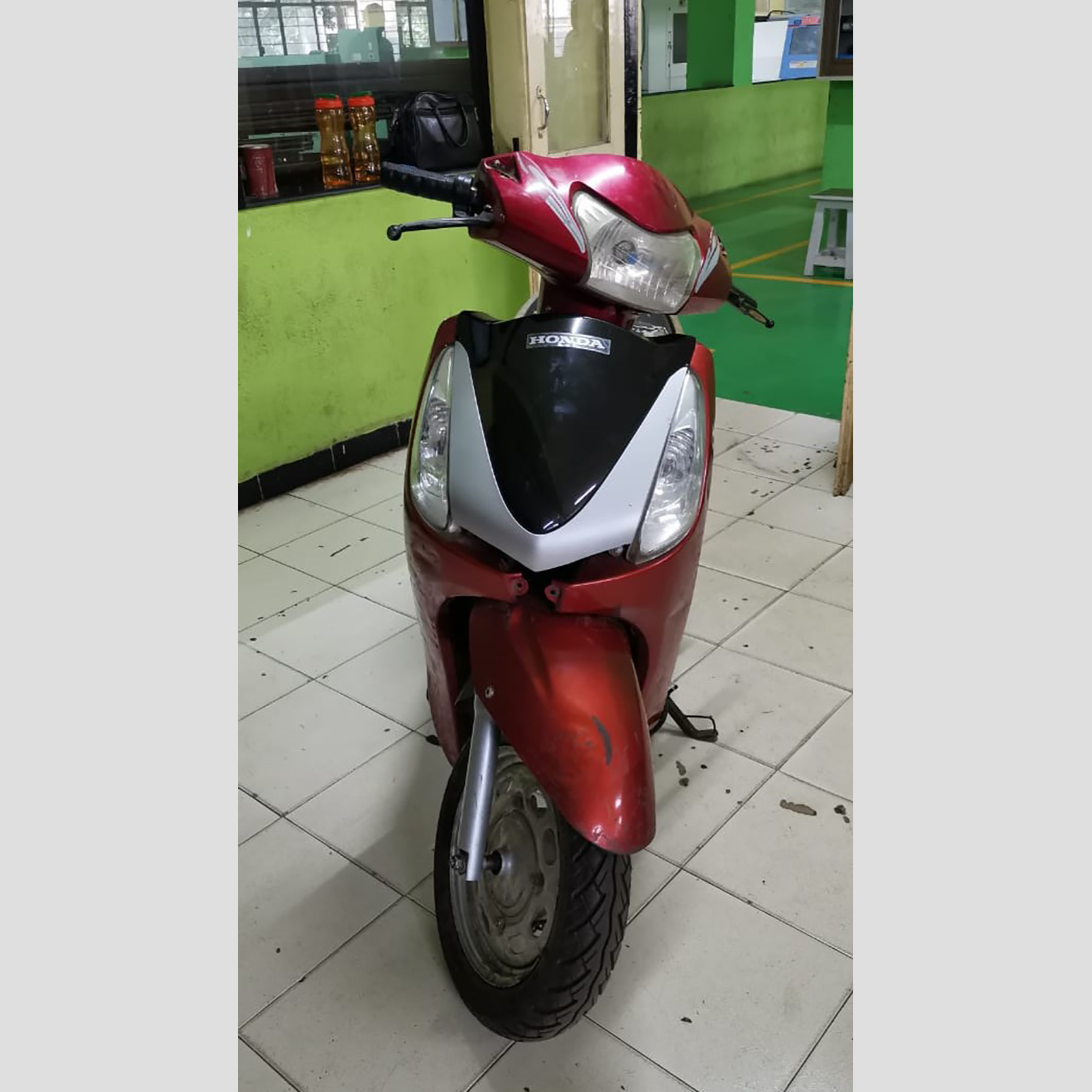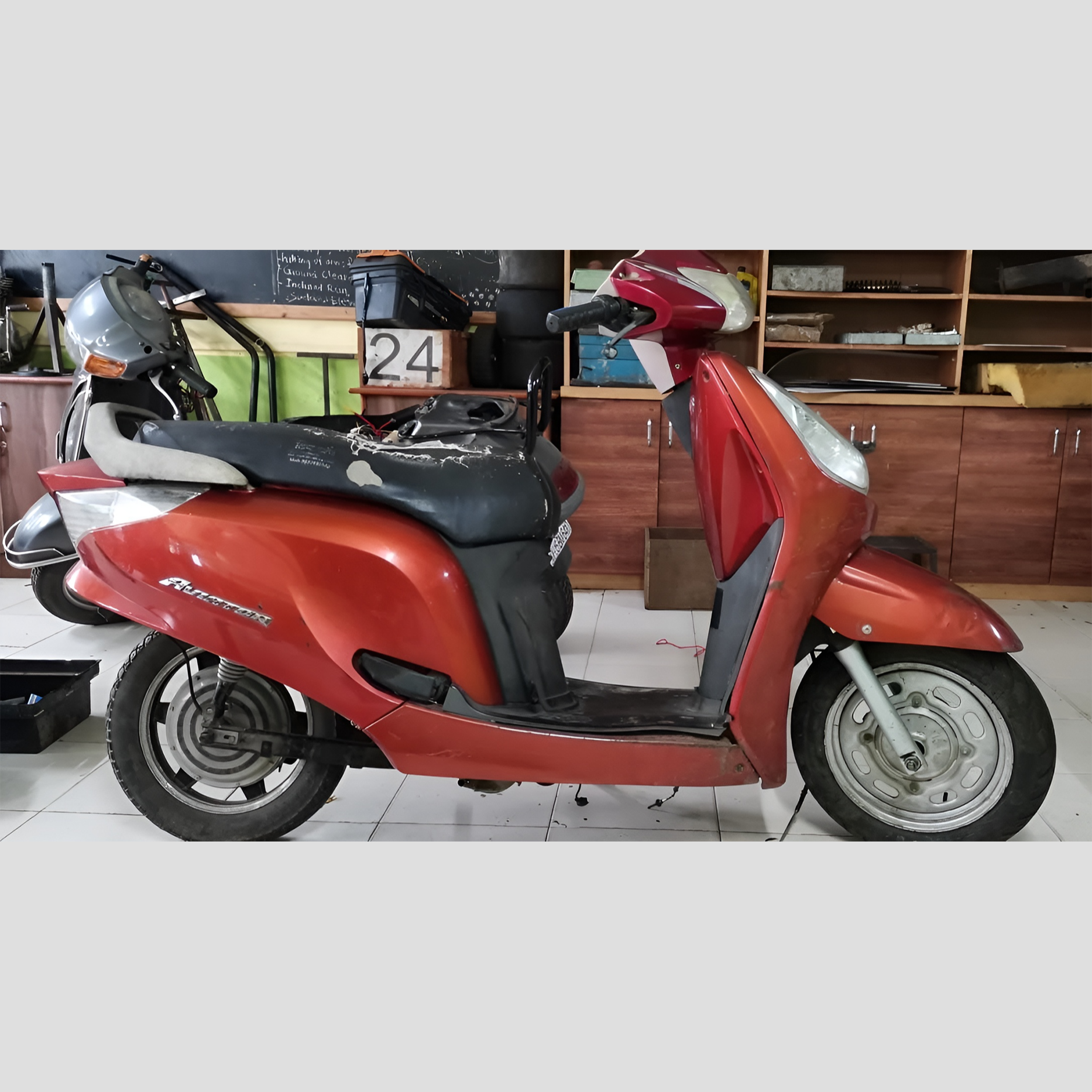Retro-converted Electric Scooter
To retro-convert the conventional Honda Aviator, which runs on petrol, into an electric scooter, it was essential to integrate several significant components. The integration process included the hub motor, controller, converter, rechargeable batteries, throttle, digital display, and main power supply switch, all of which played a vital role in the successful electric conversion.
The hub motor, rated at 48V and 23Ah, functioned as the electric equivalent of an internal combustion engine. Its design was waterproof, enhancing its durability and extending its lifespan. Additionally, the controller functioned as the 'brain' of the system, significantly impacting performance and maintenance costs. If advanced AI-based controllers were integrated, featuring efficient monitoring algorithms, this could greatly enhance the electric scooter's operational efficiency.
The electric scooter's power was stored in rechargeable lithium-phosphate batteries with a capacity of 48V and 25Ah. To ensure compatibility with various components like the lighting system and digital speedometer, the voltage was reduced from 48V to 12V by a step-down converter. The speedometer provided essential information, such as the distance covered and the battery's state of charge, which improved the overall user experience.
Safety was a top priority, and the scooter had a primary power supply switch and a miniature circuit breaker (MCB) to prevent short circuits and protect vital components during extended periods of inactivity. These measures made the scooter more reliable, efficient, and functional as a sustainable transportation option.
